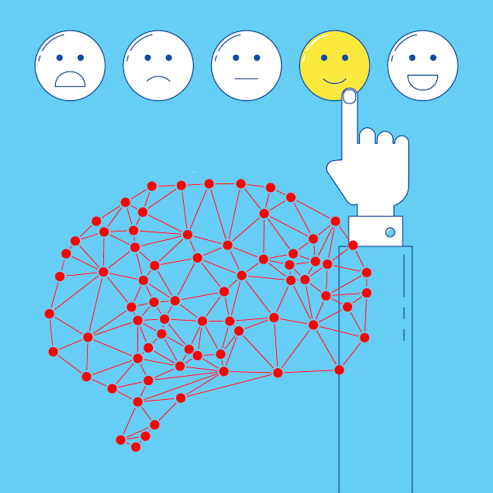With so much commerce moving online, digital customer experience (CX) is becoming increasingly important. According to a 2018 Gartner survey, “Across all industries, at least 84 percent of consumers say their experiences with using digital tools and services fall short of expectations.”[1] Commenting on the survey, Brad Holmes (@bholmes3), Managing Vice President in Gartner’s Healthcare and Life Sciences Industry Research practice, stated, “Customer focus is a top business priority for CEOs and subsequently a large investment area for CIOs. Despite these efforts, consumers report significant gaps in enterprises’ ability to make digital experiences easy, to earn their trust, and to deliver desirable results.” Any shortfalls organizations may have had in providing online customer experience before the pandemic were made excruciatingly clear during the pandemic. Holmes noted, “While millennials are the most frequent users of digital services, they are also the least happy. Out of all generations, they have the lowest opinion of most industries’ digital services. This may be because baby boomers and other older generations use over time has made them more immune to poor ease of use, or that they have become resigned to doing what it takes to get value one way or another.” Since the pandemic forced many boomers to become more familiar with the digital path to purchase, my guess is that any current survey would show an increase in their dissatisfaction as well.
Improving digital customer experience
According to Vandita Grover, a Computer Lecturer at the University of Delhi, “Customer Experience is a competitive differentiator and driving force for a business’ success.”[2] It really doesn’t matter to a customer whether they are dealing with a company in person or online, they expect a positive experience. Unfortunately for companies, customers can be difficult to please. René Aerdts (@ReneAerdts), Chief Technology Officer at DXC Technology, explains, “Consumers have been conditioned by online retailers like Amazon to expect high service levels, easy-to-use interfaces and customized buying experiences.”[3] In this era of omnichannel operations, Aerdts insists that companies must make consumers feel like each experience is better than the last. “Much has been written about retailers needing to provide an omnichannel experience across multiple platforms — data from research group IDC found that 71% of consumers prefer omnichannel retailers and those retailers now account for 35% of e-commerce growth. However, for omnichannel to have real power, retailers must go beyond simply enabling customers to interact with them via mobile devices, call centers or physical stores. Instead, they need to ensure that the buying experience improves as consumers move from platform to platform.”
Grover observes, “Customer experience can be difficult to perceive, manage, measure, and support as it is dynamic, contextual, and offers a mammoth amount data to mine.” When it comes to understanding customers, the more data a company can generate from customer interactions the better. That data can be used to improve customer experience. As Grover writes, “AI can leverage customer data and interactions to fuel CX strategy, automate the repetitive and mundane tasks of data cleansing, structuring, and maintenance, and help companies understand customer opinion for crafting targeted and engaging experiences.” Aerdts suggests there are five key factors retailers should consider if they want to deliver enhanced, cross-platform digital customer experiences. Those factors are:
Corporate Environment. According to Aerdts, “Retailers have to create environments where they can try new digital products and features and then absorb them if they work or move on to the next innovation if they don’t.”
Online Security. “[Retailers] must build security into all new digital products,” Aerdts writes. “Much has been written about DevOps and agile development, but when pursuing digital transformation nothing moves forward without security.”
Customer Digital Footprint. Aerdts insists, “Retailers must also understand the customer’s digital footprint. They need to track their customers from a behavioral perspective, which means watching their buying patterns carefully.”
Customer Sentiment. According to Aerdts, “Tracking customers’ social media activity is also essential. Customers are always giving opinions on products and retailers must become a part of the conversation.”
Embrace Technology. “Finally,” Aerdts writes, “retailers have to embrace new technologies.” Among the technologies he discusses are 3D printing, virtual reality, and drones. And, as Grover noted above, cognitive technologies are probably the most important technologies retailers should embrace.
Grover suggests five ways cognitive technologies can revolutionize customer experience. They are:
1. Data Analytics and Insights. Grover writes, “A customer’s digital activities and interactions result in enormous data, which needs to be structured and mined to gather relevant insights. Efficient customer management requires a 360-degree view of the customer and [their] interactions, from various channels.” Cognitive solutions, like the Enterra Shopper Marketing and Consumer Insights Intelligence System™, can integrate numerous sources of data to provide insights about consumers.
2. Improved Personalization. “Personalization,” writes Grover, “is integral to the customer experience. In the digital world, it is essential to cut through the noise and deliver personalized, relevant messages and content. Intelligent prediction and customization make the customer feel like she is essential to your business, thereby increasing engagement and amplifying her experience.” When it comes to personalization, retailers need to tread carefully. Some personalization can become creepy, and, according to Andrew Busby (@andrewbusby), Founder and CEO of Retail Reflections, it can become meaningless. He explains, “In the lemming-like pursuit of so-called personalization, most, if not all, retailers have lost sight of the very thing that makes something personal: relevance and context. If I draw an analogy with an experience of dining out, it would be akin to the waiter at a restaurant bringing me a starter before I’d even chosen from the menu: Well, sir, you had this the last time you were here so we assumed you’d want another.”[4]
3. Recommender Systems. According to Grover, “Shopping experiences can be made easy and swift if the context of user search or transaction can be established. AI can leverage search history, location data, time (special days, dates, etc.) to determine what the customer is looking for and suggest shopping recommendations for customers.”
4. Customer Support. Grover rightfully asserts that customer service and customer experience go hand-in-hand. “Customer support has a significant impact on customer experience and the right AI tools can help you deliver a responsive, focused, and consistent support experience.”
5. Simplicity, Efficiency and Productivity. Finally, Grover recommends the KISS philosophy — keep it simple stupid. “Customer experience means providing hassle-free and quick interactions that add value to customers’ lives.”
Busby asserts retailers need to implement all technologies wisely. “Retail has become a fertile landscape for new technology,” he writes. “Seemingly every day the newest shiny toy hits the market. But the secret lies not in the technology itself, which is ephemeral. The secret lies in how the technology is deployed — and in what fashion. Deploying the right blend of technology to deliver on your brand’s reputation is key to knowing which technology to invest in and which to leave alone.”
Concluding thoughts
Busby suggests the most important thing retailers can do to improve customer experience is to remember customers are real people. “We’re all human after all,” he writes. “We are unpredictable, emotional, sometimes irrational and at times downright difficult to reach. As humans, emotions drive our decisions. So tap into those emotions, and you’ll discover the best path to success.” Grover agrees. She concludes, “Human touch, empathy, and emotional intelligence will always be paramount to craft joyful and memorable customer experiences. Combining these human elements with the best that AI and related technology can offer will further amplify CX.”
Footnotes
[1] Gartner, “Most Consumers Have Underwhelming Digital Experiences, Survey Finds,” SupplyChainBrain, 10 October 2018.
[2] Vandita Grover, “5 Ways AI can Revolutionize Customer Experience,” MarTech Advisor, 7 March 2019.
[3] René Aerdts, “Enhancing digital customer experiences,” The Record, 3 April 2019.
[4] Andrew Busby, “5 ways to delight your customer in the digital age,” Longitudes, 19 August 2019.





